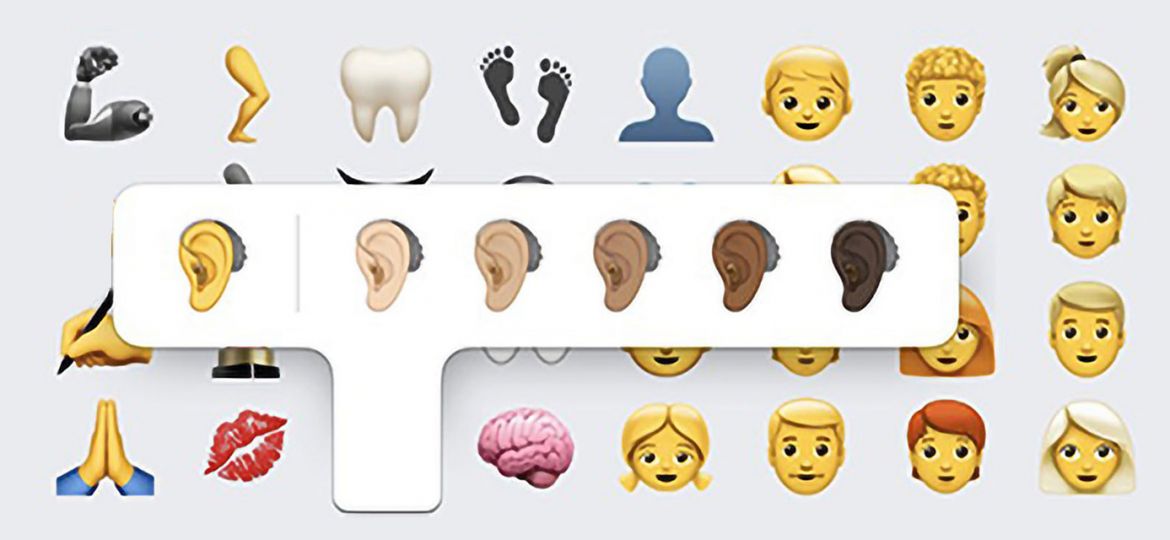
THE NEW HEARING AID EMOJI: HOW HEARING LOSS IS BECOMING MORE VISIBLE THAN EVER
As big-name businesses are now recognising hearing loss, the general public is becoming increasingly aware of hearing problems. Let’s take a look at how this could be a great thing.
In mid-2019, Apple unveiled a selection of new emojis. While past iterations of emojis have included anything from baked goods to animals, this drop was different. It featured a whole host of different disability-related emojis, from wheelchair users to bionic arms, making this iOS 12.3’s most inclusive launch thus far. Something to celebrate is that the hearing loss and hearing aid emoji provide valuable awareness for one of the less-visible health issues that millions of people live with every day.
Why the hearing aid emoji is so important
What makes representation via emoji so important? For younger individuals with hearing loss or other hearing issues, wearing a hearing aid can be a daily challenge. Wearing hearing aids can have a direct impact on self-esteem, and can even be a root of anxiety for those who need to wear them every day. Despite significant advancements from the bulky solutions of the 1950s, hearing loss is often a visible condition in terms of behaviour. Most hearing aids are also visible, even if they are smaller and more unobtrusive than ever.
Inclusivity has been a buzzword over the past few years, gaining traction in many different communities and areas. From individuals with invisible illnesses to those with prosthetic limbs, wheelchair users to those with other genetic conditions, the internet has provided a way for people to be more forthcoming about their differences – especially when it comes to social media. As such, it makes perfect sense that emojis that are used socially, thousands of times every hour, should be just as inclusive as its audience. Very few people don’t use emojis these days, so why not ensure everyone has a voice?
One of the critical elements of the emoji update is that Apple makes no specific distinction between disability-focused designs and other releases. This further normalises hearing aids and other disabilities, making them part of the everyday lives around us as opposed to an odd or unusual thing. For teenagers and adults with hearing aids and hearing loss, being able to represent themselves online is the norm more than ever. Emojis are an extension of that, providing an added layer of normality to living with hearing loss.
Hearing loss representation with toys

The reason why representation is so important for younger children is it helps to make differences healthy to them. The introduction of Joss, alongside strides being made by other brands, helps to show that people are not defined by their disability, it’s just a small part of who they are as a person. With Mattel now introducing Barbie dolls with wheelchairs and prosthetic limbs, it seems like a hard-of-hearing Barbie might not be off the cards either.
By making hearing loss and other hearing conditions less about being separate and more about being the same – with a little extra help – children can develop a better understanding of inclusivity at a younger age. As hearing loss becomes a more talked-about and seen thing, children will likely gain a better understanding of it as a common condition. While this is important for children who experience hearing loss or hearing problems, it’s just as crucial for children with normal hearing to understand and normalise hearing loss.
With many schools now teaching sign language to their students, and better representation on children’s TV, we’re on our way towards a more inclusive future for people with hearing loss. Mattel’s dolls with disabilities and Apple’s new emoji are a step in the right direction. As hearing loss becomes a more significant part of day-to-day life, as well as pop culture, it will become more evident that hearing aids – and related conditions – aren’t something to be ashamed of.
To learn more about hearing loss and what can be done about it, please contact us to book an appointment in Bedfordview or Benoni by calling our office on 011 615 3047 or email candice@cvhaudiology.co.za
Contents of this article originally appeared on: https://www.signia-hearing.com/blog/the-new-hearing-aid-emoji/


